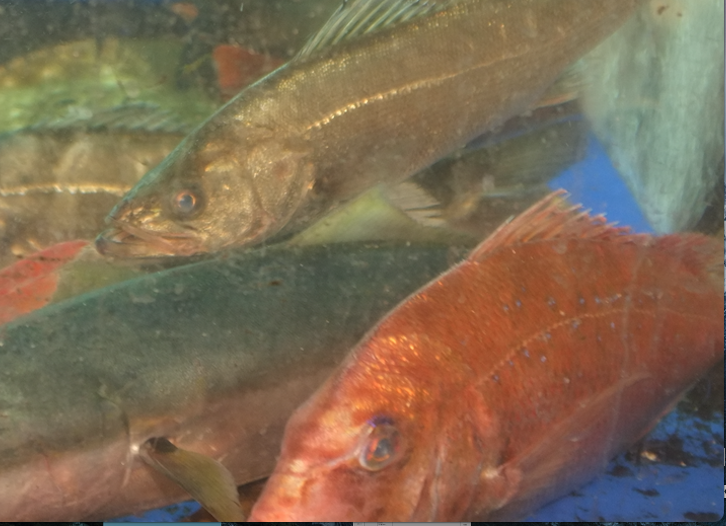
Essential lipids in fish and fisheries in Awaji
In Awaji Island which is surrounded by the sea, the fishery industry is as important as expected. In 2018, the 3 cities of Awaji, Awaji-shi, Sumoto, and Minami-Awaji, had 1191, 382, and 450 fishermen respectively. Sardines, sand lances, shrimp, squid, octopus, and sea breams are typical seafood found around Awaji Island. They are sent to big markets and many families in Osaka and Kobe areas near the island. Fishery is a traditional and very important industry together with agriculture in Awaji since around 1,500 years ago.

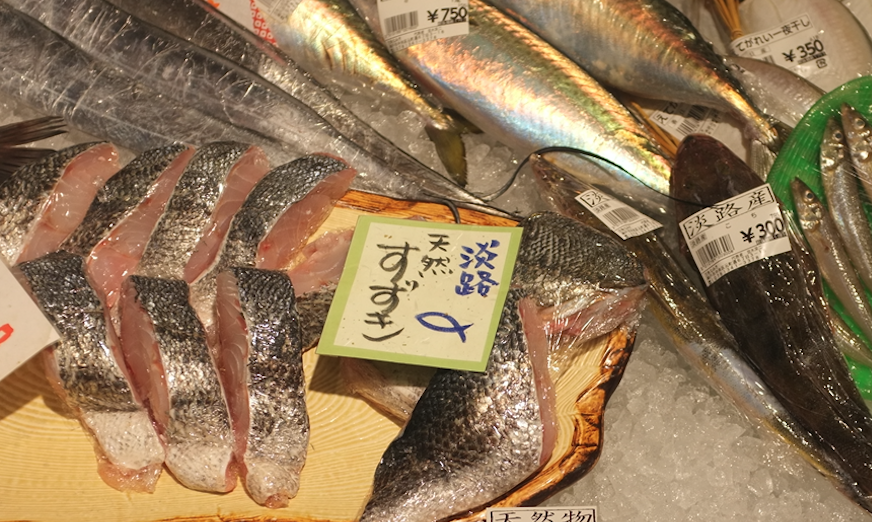
In Japan sources of proteins have been mainly fish meat rather than animal meats for a long time based on Buddhism. However, after animal meats were switched from fish as the main protein source 150 years ago when Japan opened to the outside world, now people do not eat fish as often as before. But fish are important because of their lipids (oils) from a nutritional point of view. Lipids are the general name of various oily materials mainly made of carbon and hydrogen atoms alone. In the figures, the chemical structure of one of the major lipids in our body, glycerol-lipid, is shown. Glycerol-lipids are composed of glycerol and fatty acids. Such lipids do not have high affinity to water as described in another topic of this home page (see “water and life”). Lipids are essential elements of our cell membranes surrounding the cells. In blood a lot of free lipids also exist together with proteins, named lipo-proteins. These lipid molecules including cholesterols are supplied to our whole body as an energy source. In the cell membranes as shown in the figure glycerol moiety of glycerol-lipids faces to water while the fatty acid moiety does to the hydrophobic molecule, i.e. another fatty acid, forming a double layer structure. Because of this structure, cell membranes do not permit our nutrients like glucose and amino acids to cross the membranes. The cell membranes are thus important elements of our cells, separating the inside and outside of cells.


Fatty acids linked to glycerol have several distinct types of molecules. Depending on the types of fatty acids in the membrane-lipids, the softness of cell membranes is changed. This softness of cell membranes plays a role in terms of our health conditions. For instance, the youth and vibrance of our skin depends on this softness together with water contained in cells. Softness of the epidermal cells of blood vessels is related to our blood pressure levels. It is well known that Eskimos who have been eating fish and seals do not have any troubles in terms of cardiovascular systems like cerebral infarction. This is because lipids in cell-membranes and lipo-proteins in their blood contain a special type of fatty acids, DHA (docosahexaenoic acid) and EPA (eicosapentaenoic acid) which exist in fish and seals. These fatty acids make cell membranes soft and prevent coagulation of lipo-proteins in blood, leading to avoiding cerebral infarction. Because of these chemical backgrounds, fish containing DHA and EPA become an important food for us. The Japanese Ministry of Agriculture and Fishery shows recommending intake-amounts of DHA plus EPA, 2.2. grams and 1.9 grams a day for men and women, respectively.
The Institute of Brain Chemistry and Human Nutrition in London ( https://ibchn.org.uk/about.html) emphasizes the importance of DHA in brain function, especially for development of human brains. They recommend children and pregnant mothers to intake more DHA. DHA and EPA are not synthesized in our body but are needed to be taken from outside. Therefore, they are named essential fatty acids.
Now we will look into the details of lipids a bit more. As described above, in the lipid molecules of membranes which contain a part with a high affinity to water, called hydrophilic part, and also another part with a low affinity to water, called hydrophobic part. This hydrophobic part has a chain like structure made of around 20 carbon atoms and each atom binds hydrogen atoms as shown in the figure. One type of structures of the carbon chain is strait while another type is folded. The former type is called saturated fatty acid and the latter called unsaturated fatty acid. DHA and EPA are members of unsaturated fatty acids. Unsaturated fatty acids are liquid at room temperature while saturated ones are solid. In cell membranes both saturated and unsaturated fatty acids are needed. Membranes with more unsaturated fatty acids are soft while membranes with the more saturated fatty acids are hard. From the lipids in cell membranes, several physiologically important materials are also released like prostaglandin affecting inflammation and sleep. Non-steroid drug for anti-inflammation is the inhibitor of inflammation by affecting the enzyme required for the release of prostaglandins from the membrane lipids.
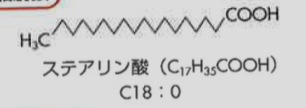


Once physiological importance of unsaturated fatty acids like DHA and EPA is realized, you might want to know about the fishery activity in Awaji now. Let’s take a look at the fisheries in Awaji. In Awaji, ports for fishery are mostly located in the northern area of the island. Nine ports in Awaji city (Toshima, Asano, Murotsu, Ikuha, Ichinomiya, Iwaya , Mori, Tsuna, and Kariya) (examples:http://iwaya-gyokyo.jp/untitled20.html、https://www.hyogo-c.ed.jp/~rekihaku-bo/historystation/trip/html/135/135.html)are the center of fishery and at each port, fishermen organize independent associations for fishery.
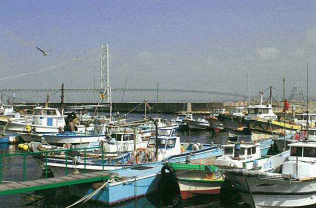
Here we introduce the daily life of a fisherman who works based out of the Ikuha Port. Mr. O gets up at 2:30 to 3:00 am in the morning when he goes fishing. He goes to the port and gets in the fishing boat. While fishing he works as a crew member with 4 to 5 other members of the boat and uses a fishing net with another fishing boat as a team. This is a traditional style of fishing from about 200 years ago. He returns around noon. When they try to catch shrimp, octopus, and flounder etc., they use a special net for the fish living at a bottom area of sea. They adjust the sizes of the windows of the net, depending on a size of targeted fish by themselves. The designated fishing areas are regulated by the members of each port. Mr. O’s story shows us that a lot of specialized skills are required for fishing and a lot of hard work. You may be able to imagine all of the fisherman’s work that is behind actually getting a fish onto your table.
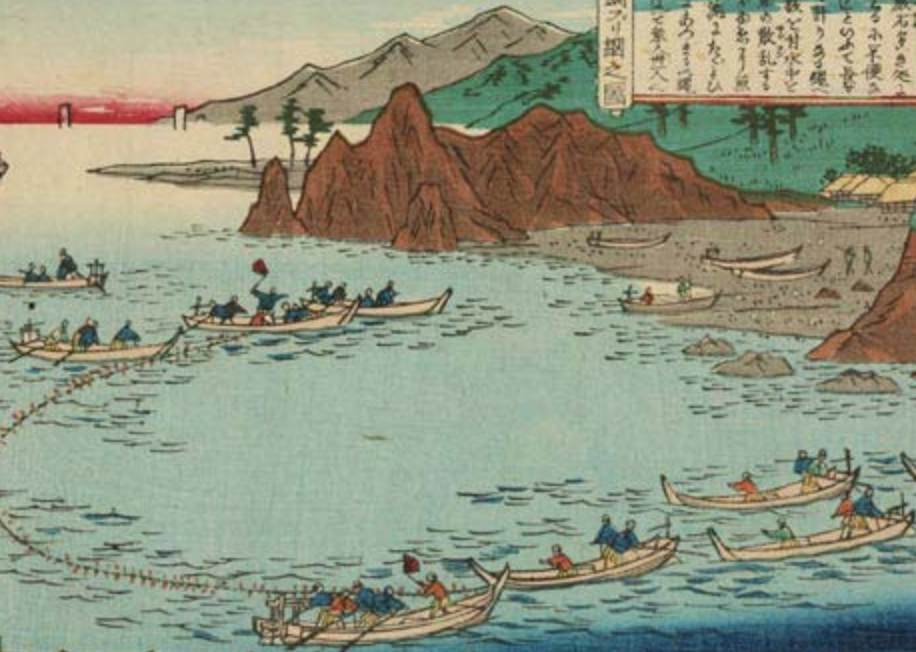
How about a future of the fisheries in Awaji? Two things cause a big threat for the future of the fisheries in Awaji; One is the aging of fishermen, and the other is the decrease in the amount of fish that come around Awaji, especially sardines. During the last three years, the number of fish caught has reduced dramatically. In the northern area of Awaji the artificial culture of sea weed “nori” is a big industry and income for the fishermen. In autumn, they start to feed nori seeds on artificial sheets and then cultivate them for three weeks. They repeat this process several times during winter and spring. Fisherman’s work for Nori cultivation also requires a lot of work during cold winter and early spring while sophisticated machines are being introduced for the feeding and harvest of “Nori” now.
To fight the decrease in the abundance of fish, fishermen and people related to the industry are trying more sustainable fishing based on a regulation of catching fish. They also try to clean up the reservoirs that supply minerals to sea. Artificial cultivation of fishes is important. In South Awaji City, cultivation of puffer fish is being done. Puffer fish, after three years of cultivation, are now very popular in the Kansai area. “Wakame” seaweed is produced as another important artificial cultivation item. In all of Japan, the cultivation of fish makes up more than 20 % of the entire fishing industry. Moreover, close to 50 % of commercial fish is imported from abroad. Under such situation, we need to support sustainable fisheries in Awaji to keep our important source of nutrients, and also a cultural tradition of fishing in Awaji. We can enjoy fresh fish dishes at Awaji Hello Kitty Smile restaurant (https://awaji-resort.com/hellokittysmile/restaurant.html). More of such restaurants are available now in Awaji and waiting for your visit.

